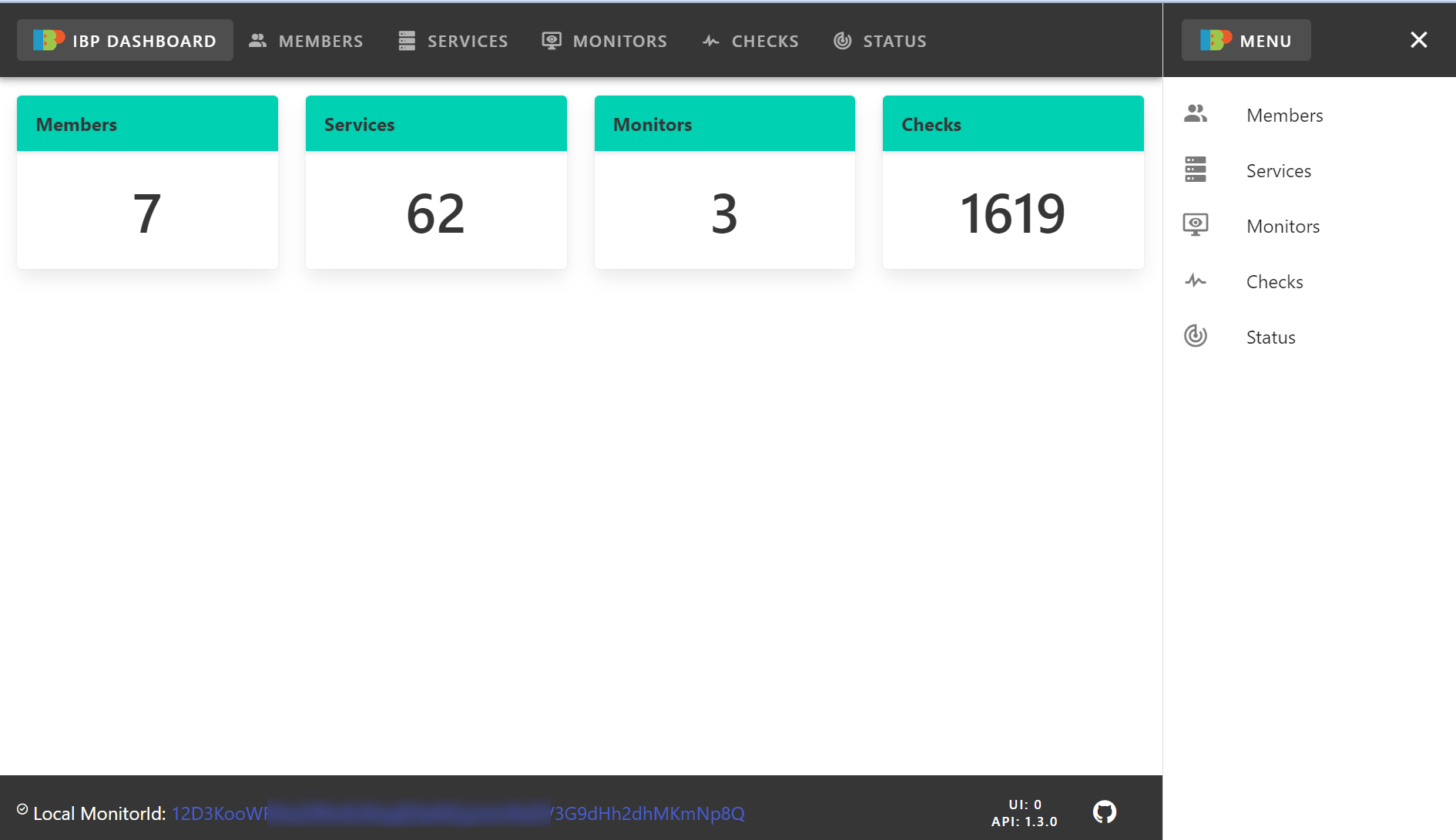Monitor
Each member of the Infrastructure Builders' Programme, whether in the hobbyist or in the professional tracks, must run a node as part of the monitoring network that will measure the service levels of the programme.
The code of this monitor solution is open source and can be found in this Github repository: ibp-monitoring.
Prerequisites
Before continuing with the procedures below, you must first:
- Provision a virtual machine or cloud instance with the provider of your choice, this machine must be accessible from the Internet.
current deployments are using 1 vCPU, 2GB RAM and 64GB storage.
-
(optional) Arrange a DNS record in your own domain name (e.g.
ibp-monitor.example.com) pointing to the IP of your machine above. -
Install
dockeras shown below:
# Remove any old docker installation
for pkg in docker.io docker-doc docker-compose podman-docker containerd runc; do sudo apt-get remove $pkg; done
# Install dependencies
sudo apt update
sudo apt install ca-certificates curl gnupg
# Install docker's official GPG keys
sudo install -m 0755 -d /etc/apt/keyrings
curl -fsSL https://download.docker.com/linux/ubuntu/gpg | sudo gpg --dearmor -o /etc/apt/keyrings/docker.gpg
sudo chmod a+r /etc/apt/keyrings/docker.gpg
# Set up the repository
echo \
"deb [arch="$(dpkg --print-architecture)" signed-by=/etc/apt/keyrings/docker.gpg] https://download.docker.com/linux/ubuntu \
"$(. /etc/os-release && echo "$VERSION_CODENAME")" stable" | \
sudo tee /etc/apt/sources.list.d/docker.list > /dev/null
# Refresh the database
sudo apt update
# Install docker and tools
sudo apt install docker-ce docker-ce-cli containerd.io docker-buildx-plugin docker-compose-plugin
# (optional) Test the installation
sudo docker run hello-world
Preparing the deployment
Now you are going to download the code of the monitor directly from the IBP's github page
# Get root privileges
sudo su -
cd /opt
# Clone the repository in the machine
git clone https://github.com/ibp-network/ibp-monitor.git
# Enter the directory
cd ibp-monitor
# Select the latest stable version
git checkout main
You will need to make a local copy of the config.js file as config.local.js, which you can freely edit in your deployment
cd config
cp config.js config.local.js
nano config.local.js
// (...)
// this is just an extract of the local editable file
const config = {
dateTimeFormat: 'DD/MM/YYYY HH:mm',
sequelize: {
database: 'ibp_monitor',
username: 'ibp_monitor',
password: 'ibp_monitor',
options: {
dialect: 'mariadb',
// hostname = docker service name
host: 'ibp-datastore',
port: 3306,
logging: false,
},
},
// (...)
Let's configure now some variables needed for the deployment
cd ../docker
cp .env.sample .env
nano .env
The file's default content looks like this, please amend appropriately
# public DNS address of the host - comment out if not used
P2P_PUBLIC_HOST=ibp-monitor.example.com
# public IPv4 or IPv6 address of the host - comment out if not used
P2P_PUBLIC_IP=111.111.111.111
# public port for peer-to-peer connections
P2P_PUBLIC_PORT=30000
# ui http port
HTTP_PORT=30001
# api http port
API_PORT=30002
Finally, you can start the monitoring services with:
docker compose up -d
And if you connect your browser to the port indicated in HTTP_PORT you will see the frontend of the monitor running:

You may want to make a backup of the network keys, in case you plan to keep your monitor id across redeployments and migrations.
cd /keys
ll
cat readme.md
enjoy!